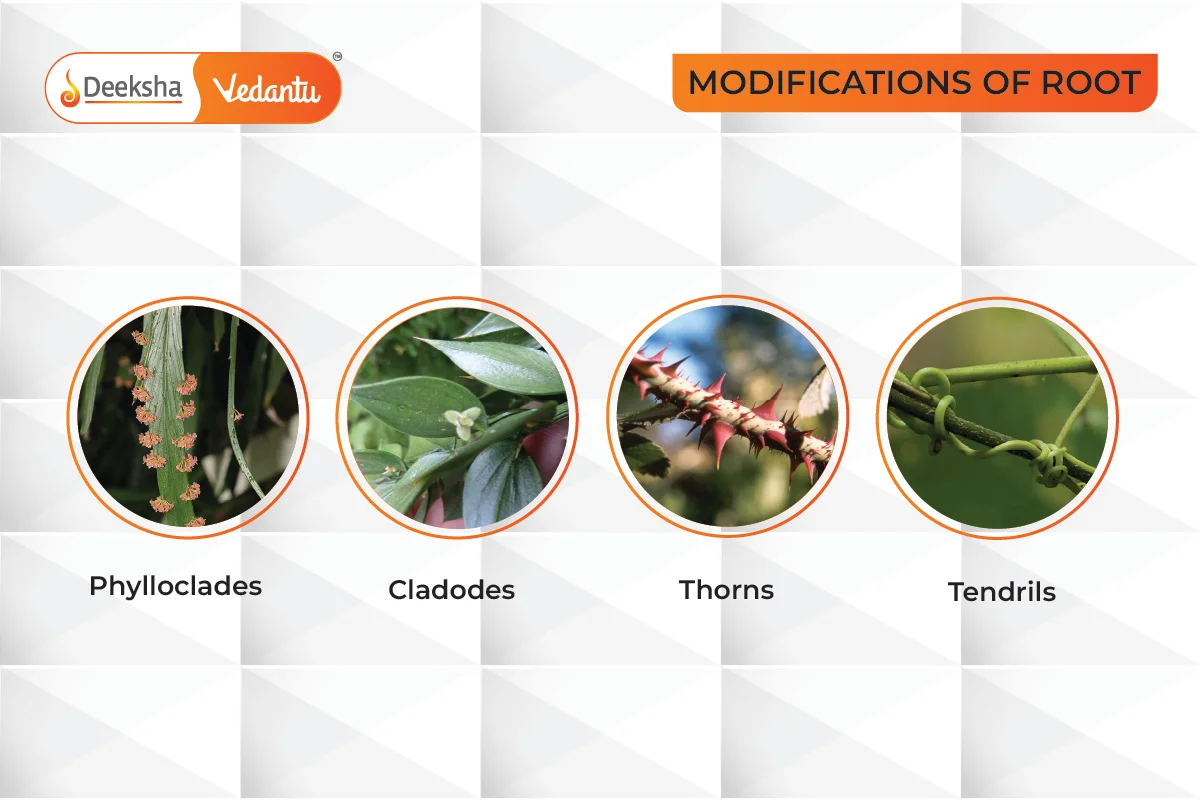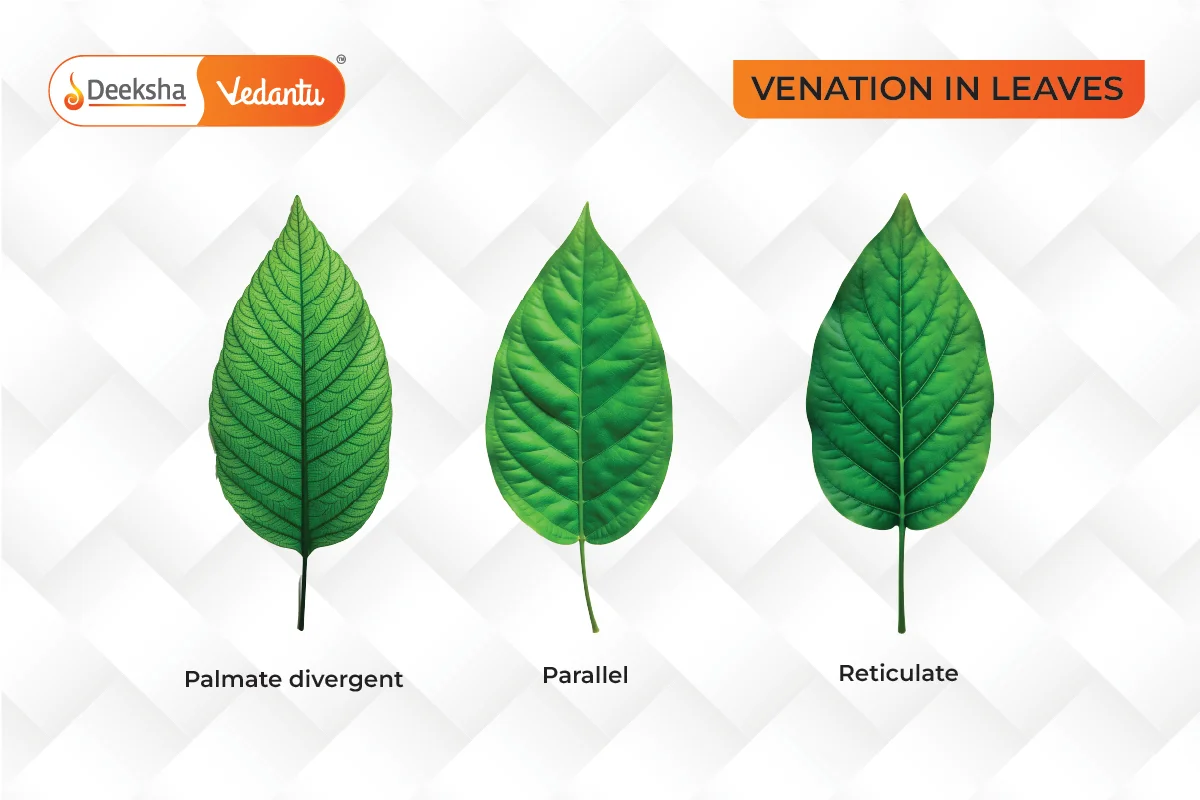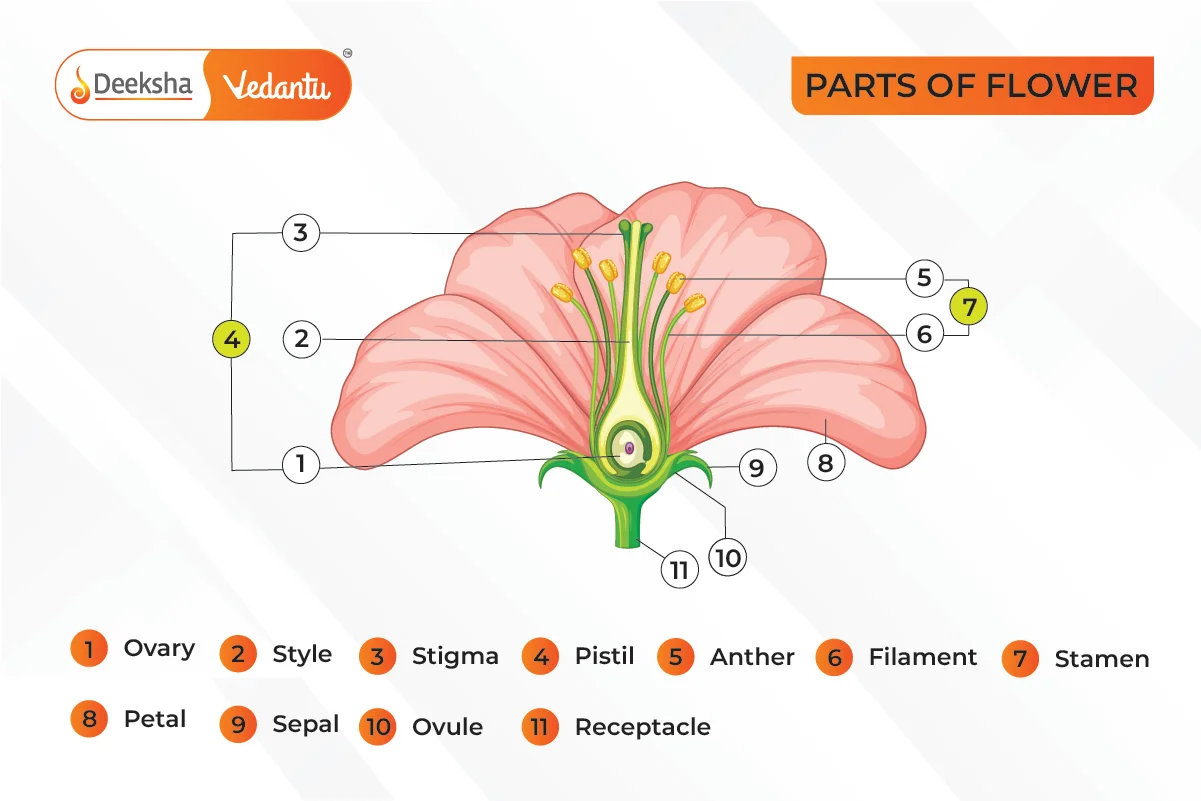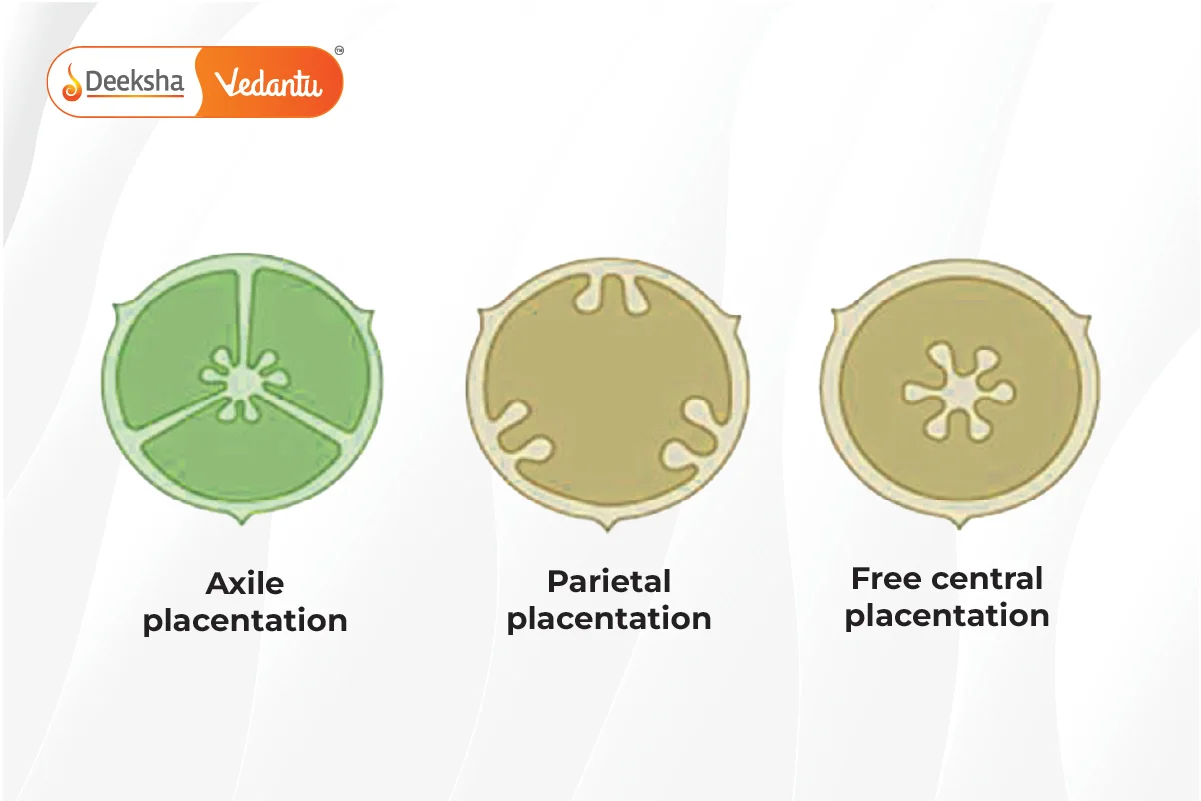The Root
Types of Root:

- Tap root: Primary root formed by the elongation of the radicle, bearing secondary and tertiary roots, common in dicot plants (e.g., gram, mustard).
- Fibrous root: Found in monocotyledons, with a large number of roots originating at the base of the stem (e.g., rice, wheat).
- Adventitious root: Roots that arise from parts other than the radicle (e.g., grass, banyan tree, maize).
Modification of the Root:
- For storage: Examples include taproots like carrot and turnip, and adventitious roots like sweet potato.
- For support: Examples include prop roots of the banyan tree and stilt roots of maize and sugarcane.
- For aeration: Pneumatophores in mangroves help in respiration by growing upwards above the ground (e.g., Rhizophora).
- For nitrogen fixation: Root nodules in leguminous plants.
The Stem
- The plumule develops into the stem.
- The node is the part of the stem bearing leaves, and the internode is the part between two nodes.
Modification of the Stem:

- Underground Stem: Helps plants survive unfavorable conditions.
- Rhizome: Runs parallel to the ground (e.g., ginger, banana).
- Tuber: End part gets swollen (e.g., potato).
- Corm: Grows vertically below the ground (e.g., colocasia).
- Bulb: Stem is reduced and surrounded by scaly leaves (e.g., garlic, onions).
- Stem Tendrils: Coiled structures that support the plant (e.g., grapes, cucumber).
- Thorn: Protects the plant from grazing animals (e.g., Bougainvillea, citrus).
- Subaerial Weak Stem: Includes offsets, suckers, runners, and stolons.
- Aerial Modification: Phylloclades in xerophytic plants (e.g., Euphorbia, Opuntia).
The Leaf
- Leaves originate from the apical meristem of a shoot.
- A typical leaf consists of a leaf base, lamina, and petiole.
Types of Venation:

- Reticulate: Network of veins present, common in dicotyledons.
- Parallel: Veins run parallel to each other, common in monocotyledons.
Types of Leaves:
- Simple: Lamina is complete with no deep incisions.
- Compound: Lamina is divided into leaflets.
- Pinnately Compound: Leaflets are present on a common axis (e.g., Neem).
- Palmately Compound: Leaflets are attached at the petiole tip (e.g., silk cotton).
Phyllotaxy (Arrangement of Leaves):
- Alternate: Single leaf at each node (e.g., Hibiscus, Brassica).
- Opposite: Pair of leaves at each node (e.g., Psidium guajava, Calotropis).
- Whorled: More than two leaves arise at a node (e.g., Alstonia).
Modification of Leaves:
- Tendrils: Long thread-like structures for support (e.g., peas).
- Spine: Reduced water loss in xerophytic plants (e.g., cactus, aloe).
- For Storage: (e.g., garlic, onion).
- Phyllodes: Petiole modified to form a leaf-like structure (e.g., Acacia).
- Pitcher: Modified leaf for trapping insects (e.g., pitcher plant).
Inflorescence
- Arrangement of flowers around the floral axis.
Types of Inflorescence:
- Racemose: Main axis grows indefinitely with flowers in acropetal succession (e.g., raceme, spike, umbel).
- Cymose: Main axis terminates in a flower with limited growth, flowers in basipetal order (e.g., monochasial, dichasial cyme).
Special Types:
- Verticillaster: Sessile flowers arranged in dichasial cyme (e.g., Ocimum, Salvia).
- Cyathium: Involucre of bracts forms a cup shape (e.g., Euphorbia).
- Hypenthodium: Both male and female flowers in a cavity (e.g., Fig).
The Flower
- Consists of four whorls: calyx, corolla, androecium, and gynoecium.
Flower Symmetry:
- Actinomorphic: Radially symmetrical (e.g., chilli, datura).
- Zygomorphic: Divisible into two equal parts in one vertical plane (e.g., Cassia, pea).
Types of Flowers Based on Ovary Position:
- Hypogynous: Gynoecium above all other parts (e.g., brinjal, china rose).
- Perigynous: Gynoecium at the same level as other parts (e.g., peach, plum).
- Epigynous: Gynoecium enclosed by the thalamus (e.g., guava, cucumber).
Parts of a Flower:

- Calyx: Outermost whorl made of sepals.
- Corolla: Bright-colored petals.
- Androecium: Male reproductive part with stamens.
- Gynoecium: Female reproductive part with carpels.
Placentation (Arrangement of Ovules in Ovary):

- Marginal: (e.g., pea).
- Axile: (e.g., lemon, china rose).
- Parietal: (e.g., Argemone, mustard).
- Free Central: (e.g., Primrose, Dianthus).
- Basal: (e.g., marigold, sunflower).
The Fruit
- Matured and ripened ovary post-fertilization.
- Parthenocarpic fruits are formed without fertilization (e.g., pineapple).
Parts of a Fruit:
- Seed and pericarp, with three layers: epicarp, mesocarp, and endocarp.
The Seed
- Ovule develops into a seed post-fertilization.
Dicotyledonous Seed vs. Monocotyledonous Seed:
- Dicot: Two cotyledons, seed coat with testa and tegmen, non-endospermic.
- Monocot: One cotyledon (scutellum), endospermic with bulky food storage, includes aleuron layer.
These notes encompass the essential concepts of the morphology of flowering plants, vital for NEET Biology preparation.
FAQs
Leaf venation is important for the distribution of nutrients and water throughout the leaf. It also provides structural support to the leaf.
The two main types of inflorescence are racemose and cymose.
The stem supports the plant by providing structural support, allowing it to stand upright. It also transports water, nutrients, and sugars between the roots and the leaves.
The different types of roots are tap root, fibrous root, and adventitious root.
The main function of the root in flowering plants is to anchor the plant in the soil, absorb water and nutrients, and sometimes store food.
Related Topics
- Plasma Membrane Structure
- Important Notes For NEET Biology – Body Fluids and Circulation
- Important Notes For NEET Biology – The Living World
- Connective Tissue
- DNA Polymerases
- Plasmid
- Types of Fermentation
- Plant Hormones
- Important Notes For NEET Biology – Chromosome Structure
- NEET Biology Weightage
- Epithelial Tissue
- Nostoc
- Important Notes For NEET Biology – Anatomy of Flowering Plants
- Bryophytes
- Marchantia











Get Social